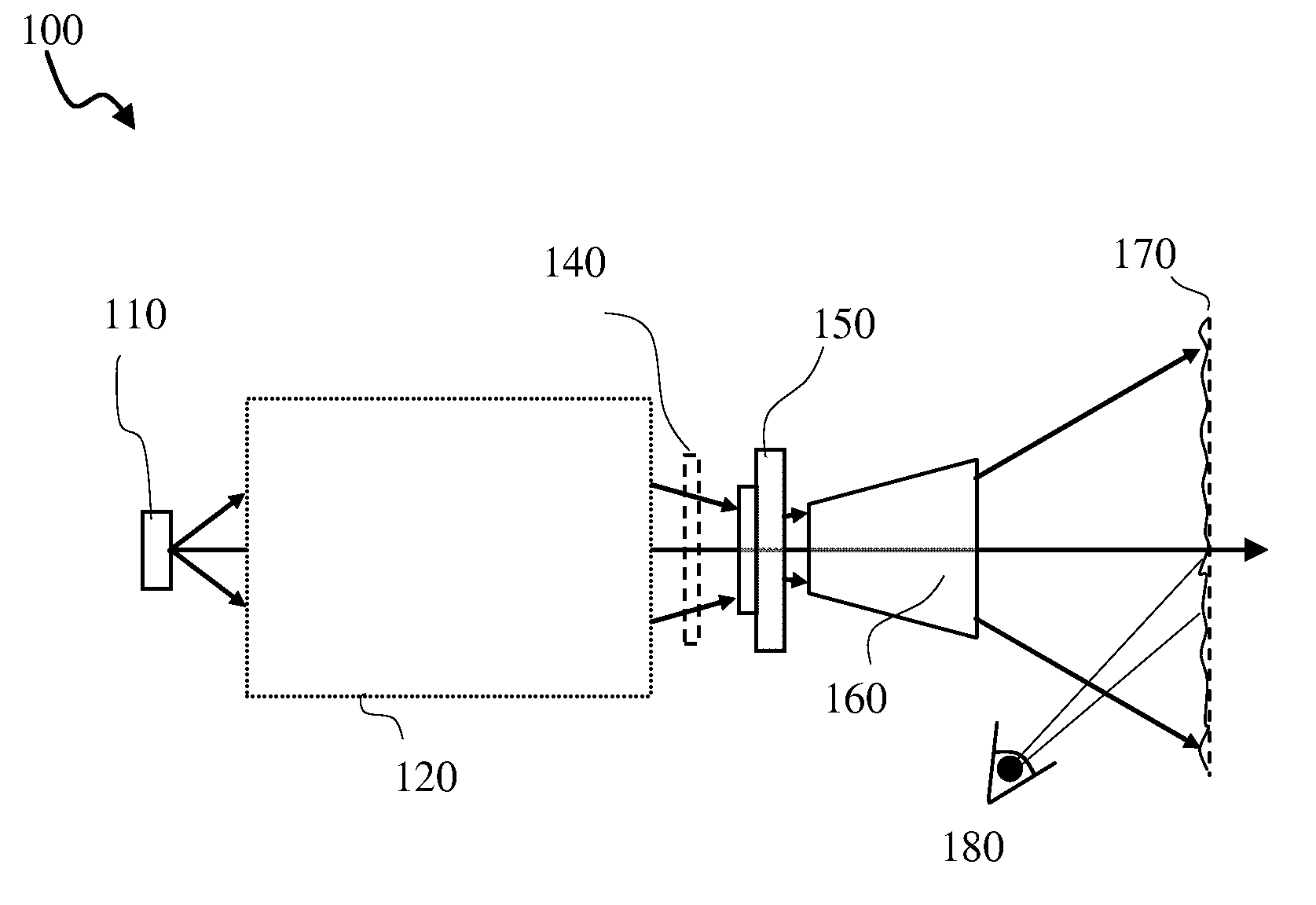Retarder-based despeckle device for laser illumination systems
a laser illumination system and despeckle technology, applied in the field of speckle reduction, can solve the problems of reflected light, detector interference, image quality degradation, etc., and achieve the effects of reducing the input power, and reducing the perceived speckl
- Summary
- Abstract
- Description
- Claims
- Application Information
AI Technical Summary
Benefits of technology
Problems solved by technology
Method used
Image
Examples
Embodiment Construction
[0061]A laser-based projector (PJ) system is illustrated in FIG. 1. In this system 100, the output light from the light source 110 is homogenized and shaped by optical elements 120 in order to form a rectangle of uniform illumination at the required aspect ratio on the display panel 150. In this embodiment, the light source 110 includes one co-packaged Red, Green and Blue (RGB) laser diode (LD) module. In other embodiments, the light source includes three discretely coupled RGB LDs. The beam shaping optics 120, which in one embodiment include a high performance lightpipe, collimation lenses, or fly's eye array, will also typically include polarization conversion and / or recovery optics if the display panel 150 uses polarization modulation (e.g., liquid crystal based display). In other embodiments (e.g., for space-constrained nano / pico-projectors), the beam shaping optics 120 includes a combination of diffractive / refractive flat optics used to homogenize and shape the rectangle in the...
PUM
| Property | Measurement | Unit |
|---|---|---|
| aspect ratio | aaaaa | aaaaa |
| integration time | aaaaa | aaaaa |
| center wavelengths | aaaaa | aaaaa |
Abstract
Description
Claims
Application Information
 Login to View More
Login to View More - R&D
- Intellectual Property
- Life Sciences
- Materials
- Tech Scout
- Unparalleled Data Quality
- Higher Quality Content
- 60% Fewer Hallucinations
Browse by: Latest US Patents, China's latest patents, Technical Efficacy Thesaurus, Application Domain, Technology Topic, Popular Technical Reports.
© 2025 PatSnap. All rights reserved.Legal|Privacy policy|Modern Slavery Act Transparency Statement|Sitemap|About US| Contact US: help@patsnap.com



